If you’re looking for one of the easiest and most rewarding vegetables to grow in your home garden, look no further than zucchini. This fast-growing summer squash is loved by gardeners everywhere for its simplicity, abundant yields, and versatility in the kitchen. Whether you’re a beginner starting your first garden or an experienced grower looking to maximize your harvest, zucchini is a must-have in your vegetable patch.
In this guide, we’ll uncover why growing zucchini is so easy and walk you through the complete process — from selecting the right variety to planting, caring, harvesting, and even troubleshooting common problems. By the end, you’ll know exactly how to grow healthy, productive zucchini plants right in your backyard, balcony, or even containers.
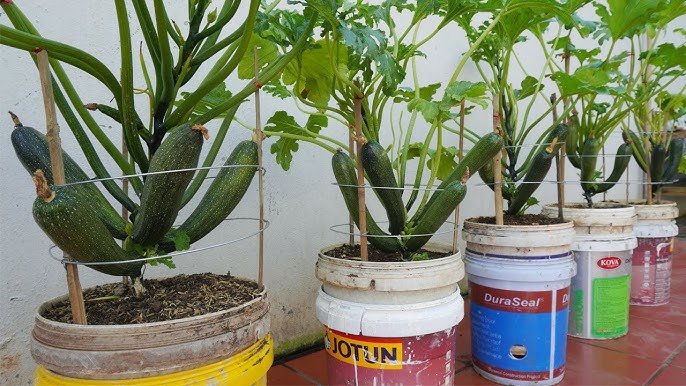
Why Zucchini Is So Easy to Grow
Zucchini (Cucurbita pepo) belongs to the squash family and is known for being remarkably resilient and fast-growing. The reasons it’s considered one of the easiest vegetables to cultivate include:
- Fast Growth Cycle:
Zucchini grows rapidly, often producing fruit within just 45 to 60 days after planting. You can enjoy a continuous harvest all summer long. - Adaptable Plant:
It thrives in a wide range of soil types and climates, making it suitable for most home gardens around the world. - Minimal Maintenance:
Once established, zucchini plants require little care — just regular watering, some sunlight, and occasional feeding. - Abundant Harvest:
A single zucchini plant can produce dozens of fruits during the growing season, ensuring you never run out of fresh squash. - Pest and Disease Resistance:
While not immune to pests, zucchini plants are generally hardy and can recover quickly with basic garden care.
These traits make zucchini an ideal choice for new gardeners who want quick, visible results.
Choosing the Right Variety
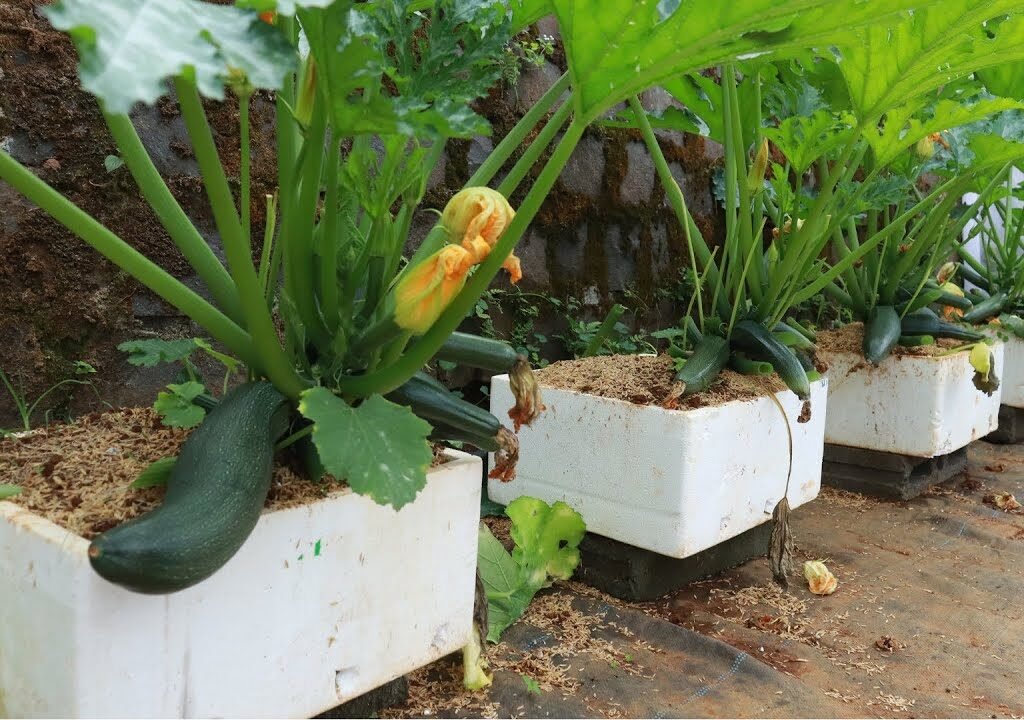
Before you start planting, it’s important to select the right variety for your space and needs. Here are some popular and reliable types of zucchini:
- Black Beauty: A classic variety known for its dark green, glossy fruits and excellent flavor.
- Cocozelle: Italian heirloom zucchini with light green stripes and a tender texture.
- Golden Zucchini: Bright yellow fruit that adds a splash of color to your garden and plate.
- Patio Star: A compact, bush-type zucchini ideal for container gardening.
- Raven: Produces dark, smooth zucchinis with a rich flavor and compact growth habit.
Choose based on your available space, color preference, and growing conditions.
Preparing the Soil
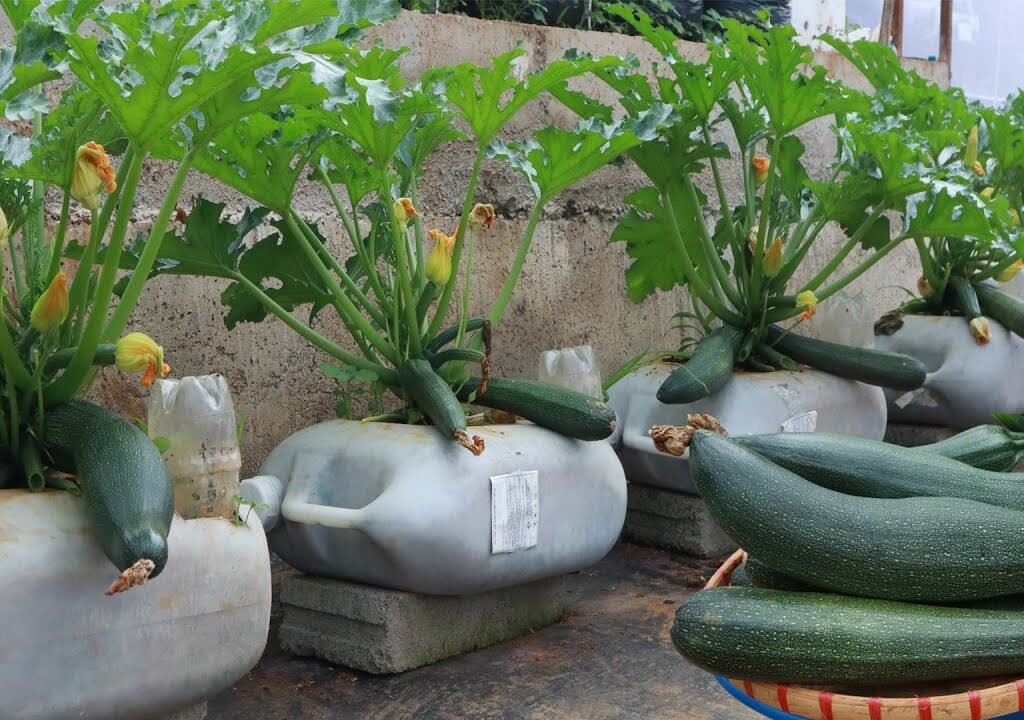
Zucchini loves rich, well-draining soil with plenty of organic matter. Here’s how to prepare your garden bed:
- Location:
Pick a sunny spot that receives at least 6–8 hours of direct sunlight daily. - Soil Type:
Loose, loamy soil is ideal. If your garden soil is heavy clay, mix in compost, cocopeat, or well-rotted manure to improve drainage and fertility. - pH Level:
Aim for a slightly acidic to neutral pH between 6.0 and 7.5. - Fertilization:
Before planting, enrich the soil with organic compost or aged manure. Zucchini plants are heavy feeders, so nutrient-rich soil ensures vigorous growth and abundant yields.
Planting Zucchini at Home
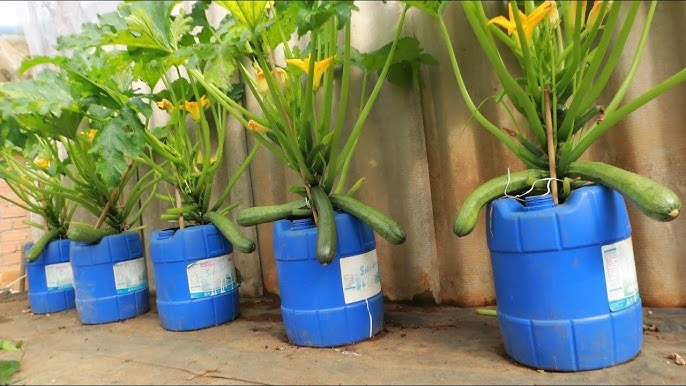
You can grow zucchini either from seeds or seedlings, depending on your preference.
1. Sowing Seeds:
- Sow seeds directly into the soil after the last frost date when temperatures stay above 18°C (65°F).
- Plant seeds about 1 inch deep and 2–3 feet apart, as zucchini plants spread widely.
- If growing in containers, use pots that are at least 12–18 inches deep and wide.
2. Transplanting Seedlings:
- If starting indoors, sow seeds in small pots 3–4 weeks before the last frost.
- Transplant the seedlings outdoors when they have 2–3 true leaves and the weather is warm.
3. Spacing:
Proper spacing is crucial to allow airflow and prevent fungal diseases. Keep 3 feet between each plant and 4 feet between rows.
Watering and Feeding
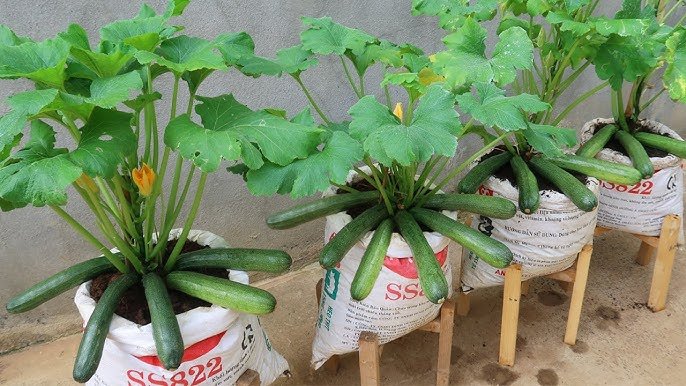
Zucchini plants are thirsty and require consistent moisture to thrive.
- Watering:
Water deeply 2–3 times a week, ensuring the soil remains moist but not soggy. Water at the base of the plant to prevent wetting the leaves, which can lead to fungal issues. - Mulching:
Apply organic mulch (like straw or dry leaves) around the base to retain moisture and control weeds. - Feeding:
Every 3–4 weeks, feed your plants with a balanced organic fertilizer or compost tea. Zucchini benefits from nitrogen early in its growth, followed by potassium and phosphorus during flowering and fruiting.
Supporting Growth and Pollination
Zucchini plants have large leaves and can sprawl across the ground. If you’re short on space, consider:
- Trellising or staking to train vines upward and save space.
- Hand pollination if you notice poor fruit development. Use a small brush or cotton swab to transfer pollen from male flowers (with thin stems) to female flowers (with tiny fruits beneath).
Bees are natural pollinators for zucchini, so avoid using chemical pesticides that might harm them.
Managing Pests and Diseases
Even though zucchini is easy to grow, some common garden pests and diseases can appear. Here’s how to handle them naturally:
- Powdery Mildew:
White powdery patches on leaves. Improve air circulation, water at the base, and spray with a mix of baking soda and water. - Aphids and Squash Bugs:
Small sap-sucking insects that damage leaves. Spray neem oil or insecticidal soap to keep them away. - Blossom End Rot:
Caused by calcium deficiency and inconsistent watering. Maintain steady moisture and enrich soil with compost. - Cucumber Beetles:
Use row covers early in the season and rotate crops annually to avoid infestations.
With timely care, most of these problems can be managed easily without chemicals.
Harvesting Zucchini
Zucchini grows quickly once it starts fruiting. Harvesting at the right time ensures tender, flavorful produce.
- When to Harvest:
Pick zucchinis when they’re 6–8 inches long for best taste and texture. If left too long, they become oversized and lose tenderness. - How to Harvest:
Use a clean knife or scissors to cut the fruit from the stem. Avoid twisting, as it can damage the plant. - Continuous Harvesting:
The more you pick, the more the plant produces. Regular harvesting encourages continuous flowering and fruiting throughout the season.
Growing Zucchini in Containers
Don’t have space for a garden bed? Zucchini grows wonderfully in containers too!
- Choose a large pot (at least 5 gallons) with good drainage.
- Use high-quality organic potting mix.
- Place the pot in a sunny location.
- Water frequently, as containers dry out faster.
- Add a support stake if needed to manage large leaves.
Container gardening is perfect for balconies, patios, or small yards — and zucchini rewards you with a surprising harvest even in limited space.
Storing and Using Zucchini
Once harvested, zucchini can be enjoyed in countless ways.
- Storage:
Fresh zucchini lasts up to a week in the refrigerator. For longer preservation, slice and freeze it, or turn it into pickles or chips. - Culinary Uses:
Zucchini is a versatile ingredient that can be grilled, roasted, sautéed, or baked. From zucchini noodles to fritters, bread, and even desserts, this vegetable adds nutrition and flavor to your meals.
Tips for a Successful Zucchini Harvest
- Rotate Crops: Avoid planting zucchini in the same spot each year to reduce soil-borne diseases.
- Remove Old Leaves: Trim yellowing or overcrowded leaves to improve airflow.
- Encourage Pollinators: Plant nearby flowers like marigolds or nasturtiums to attract bees.
- Harvest Regularly: Frequent picking ensures tender zucchinis and extended productivity.
- Feed Organically: Compost or worm castings keep plants strong and soil healthy.
Conclusion
Growing zucchini at home is one of the easiest and most satisfying gardening experiences you can have. With minimal effort and care, you can enjoy weeks of abundant, fresh produce straight from your garden. Whether you plant them in the ground or in containers, zucchini rewards you with vigorous growth, fast results, and endless culinary possibilities.
So, if you’ve ever wondered why it’s so easy to grow zucchini, now you know — it’s because nature made this plant both resilient and generous. Start your zucchini garden today and enjoy the joy of harvesting your own crisp, flavorful squashes right from home!
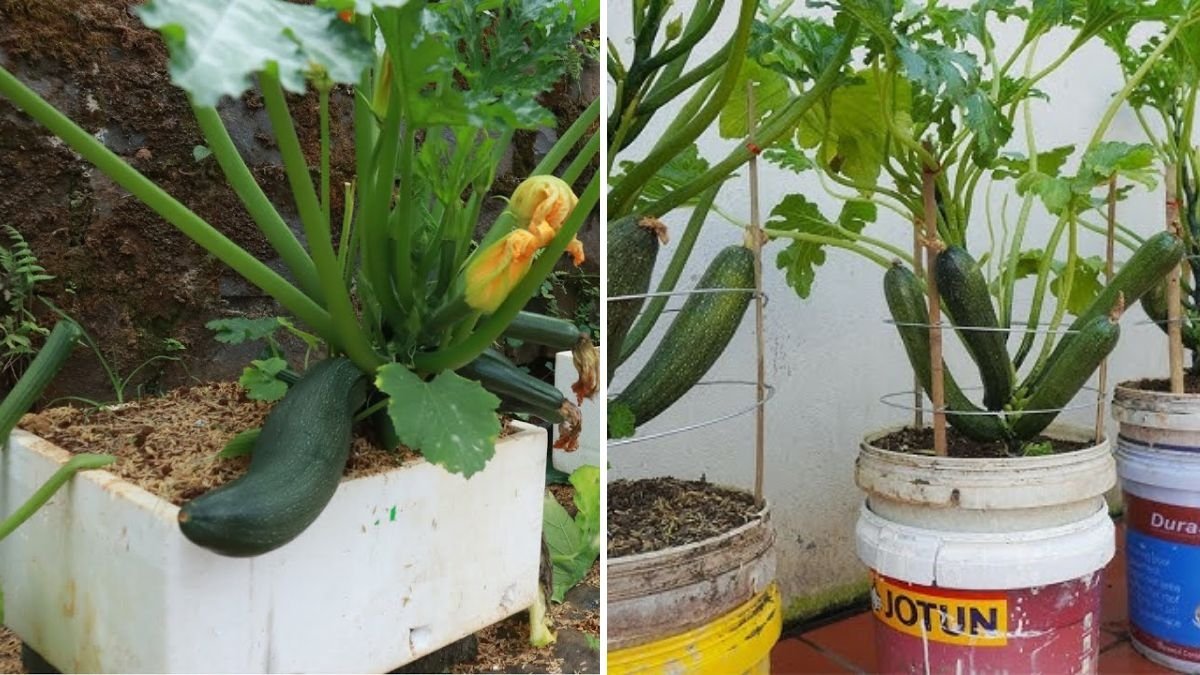





Leave A Comment